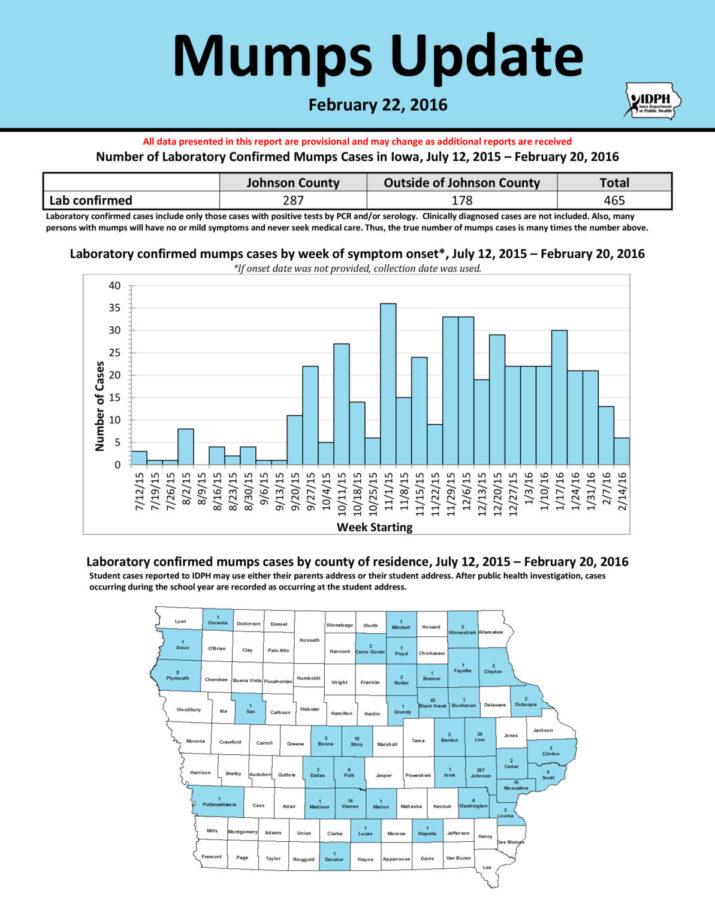Mumps outbreak begins affecting Iowa State
February 24, 2016
The mumps virus has found its way to Iowa State.
The Thielen Student Health Center has seen nine lab-confirmed cases of the mumps since December. In a typical academic year, the Health Center assists in three to five cases of the mumps.
“This is higher than we typically see, but it’s not completely out of line,” said Erin Baldwin, director of Thielen Student Health Center.
She believes the increase in cases is a result of the amount of people living in a small proximity.
Symptoms of the virus include fever, headache, sore throat, jaw pain and swelling of the salivary glands. Rare complications can include inflamation of the testicals for men, fertility problems, inflamation of the brain, inflamation of the ovaries or breasts for women and hearing loss.
Baldwin said the symptoms have remained mild on the ISU campus.
The illness can be spread by infected saliva, or anything that has been in contact with the infected saliva. The Health Center suggests students cover their mouths when coughing or sneezing, avoid sharing drinks or eating utensils, wash hands more frequently, be up to date on the measles, mumps and rubella (MMR) vaccine and disinfecting surfaces.
The University of Iowa has also seen a major impact from the illness on its campus with a record of more than 250 accounts of the mumps since mid-July. However, in 2006 it also saw a mumps outbreak.
“The students were sicker this time,” said Lisa James, associate director of clinical outreach at University of Iowa Student Health and Wellness, comparing the difference between the 2006 outbreak and now. “We have had some of the rare cases.”
The rare cases reflect the swelling of testicles in men as well as permanent hearing loss.
“Our point for the students … Mumps isn’t five days off your classes to hang out and feel very sick. It can be serious,” James said.
The outbreak this year has caused University of Iowa Student Health and Wellness to do a free vaccination campaign for those who were 24 years old and younger. Six mass clinics took place in November and continued offering services through December. They vaccinated approximately 5,000 people, all funded by administration.
The vaccinations are still offered, but they are billed to the student’s provider.
Colleges are not the only institutions experiencing the outbreak. Indianola High School has had seven cases of the mumps, which is causing schools to require mandatory vaccines, excusable by medical or religious waivers, and disinfecting common surfaces between class periods.
For the universities, custodial changes seem unnecessary.
“What we know about the virus is that it doesn’t live long on surfaces,” James said. “We are trying to more do behavior changes.”
Centers for Disease Control (CDC) visited UI in order to study its outbreak. The CDC interviewed cases and gathered information on the logistics of its outbreak including the characteristics of the people who were infected.
“They are also going to look at the effectiveness of the third dose,” James said. “Is it worth doing? Because right now the literature is a little bit gray.”
Thielen Student Health Center has appointments to receive the third MMR vaccination, and can bill it to students’ health providers.







